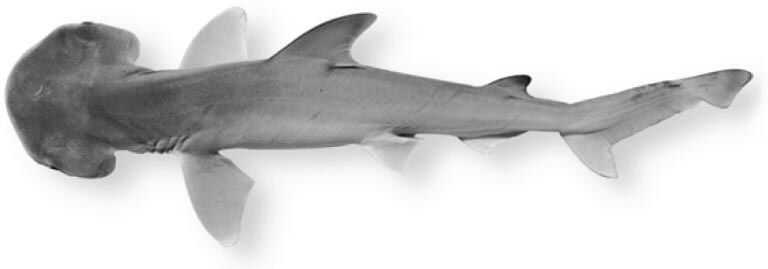Bonnethead Shark

Species Details
Sphyrna Tiburo
Sphyrnidae
Carcharhiniformes
Offshore
13 - 28 lbs.
24" - 59"
Bonnethead Shark (Sphyrna tiburo) Fish Description
The Bonnethead Shark (Sphyrna tiburo) is a type of hammerhead shark that can be distinguished from its bonnet or shovel-like head (hence the name) and its smaller stature. This shark is also quite different from its more aggressive cousins as it’s known to be a bit shy and considered harmless to humans. Aside from its spade-like head, Bonnethead Sharks can easily be identified through its greyish-brownish body which gradually lightens to white when it reaches the underside of the fish.
The Bonnethead Shark can usually be seen near beaches along the Carolinas and Georgia when the weather is warm; although they would often migrate down south to Florida and Gulf of Mexico come autumn and winter in search of food and warmer waters. It feeds mostly on small fishes and crustaceans, including crabs, shrimps, and mollusks. It can also be found swimming in schools of about ten to fifteen, especially during spawning season when they migrate south.
After mating, a female Bonnethead will store the sperm for months at a time until the environmental conditions for its young’s survival is just about right—that’s the time when they’d be able to fertilize the eggs. When they finally give birth, females would move to shallower waters to care for its pups and the males would move to a different location as to avoid eating their own young.
Interesting Facts About Bonnethead Sharks
- The biggest ever caught on record weighs twenty-eight pounds and measures over four feet long.
- The humongous fish was caught by 13-year old angler Carter Wells off Halifax River, Florida.
- They are the smallest of the ten hammerhead shark species.
- They are known to be timid and harmless sharks.
- Only one attack on human has ever been recorded.
- They are the only shark species known to exhibit sexual dimorphism—a distinct difference in size or appearance between sexes.
- The spade-like heads of males and females are different in shape—females have wider and rounder cephalofoils, while males have a distinct bulge on the top of their head.
- Females are larger than males on average.
- They are viviparous—or they develop their embryos inside their body and they are born live.
- They are rarely seen swimming alone.
- A school of Bonnethead Sharks can consist between three to fifteen individuals.
- They can live up to twelve years in the wild.
- Like other shark species, they use electroreception (ability to perceive natural electrical stimuli) to detect prey.
Bonnethead Shark Average Speed and Size
Bonnethead Sharks average size can vary between 36 to 48 inches, but have been known reach a maximum length of about 59 inches, with females reaching greater lengths as compared to males.
When it comes to their speed, most sharks can swim really fast, especially in warm waters. So you can expect Bonnetheads to be quick and agile. They also have this ability to swim a lot faster in short bursts when they’re going after a prey or if they feel threatened. Nonetheless, their being fast swimmers doesn’t factor much when you’re trying to fish for one because, as most sharks, Bonnetheads can be really aggressive in getting their meal.
Where to Find Them - Habitat and Distribution
Bonnethead Sharks are pretty abundant in the western Atlantic from North Carolina to the Gulf of Mexico. On the other side of the country, you can mostly find them in the warm waters of southern California. Most of them usually stay in shallow water, often near the coasts, bays, estuaries, and channels where they usually feed. So they are not really that hard to come by, especially during summer when they can wander as far north as the Carolinas. But come autumn and winter, you would have to follow them to the warmer waters of Florida and Gulf of Mexico.
Bonnethead Shark Fishing Tips
Yes, Bonnethead Sharks may be easy to locate—heck, you won’t even have to go far from the shore to be able to catch one of these. But, as most shark species, landing one can be a bit tricky because if you happen to hook one, you’ll be in for a long and tiring fight as they are known to be tough and spunky. For the gear, a stout rod and reel spooled with at least 20-pound test line, a sliding sinker and a three- to four-foot monofilament or wire leader with a large circle hook are more than enough to handle this shark. As for bait, a fresh piece of chunked blue crab is the best way to go. Just make sure to cut the crab in half and slip the hook through one of its limbs to make your bait more irresistible for Bonnetheads.






